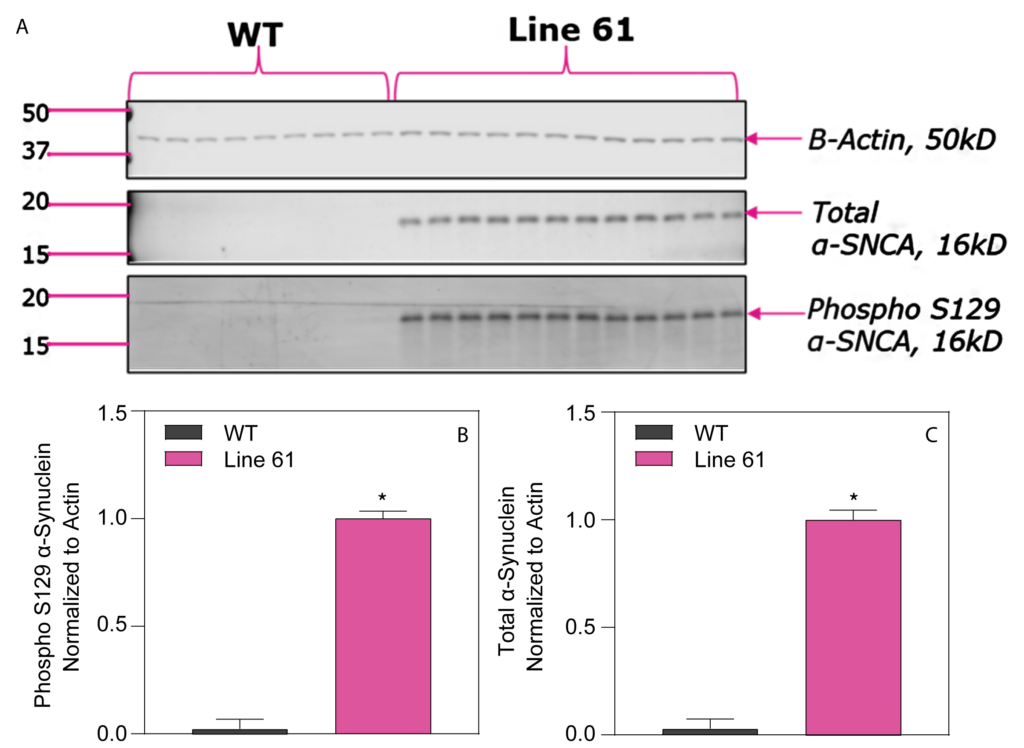The Thy-1-α-synuclein mouse model of Parkinson’s disease is a transgenic mouse model that over-expresses wild-type human alpha-synuclein under the Thy1 promoter in neurons. The model exhibits dopaminergic neuronal loss, alpha-synuclein aggregates, neuroinflammation, mitochondrial abnormalities, and motor impairment.
Line 61 HET Mice Show Impaired Performance on the Tapered Beam

When traversing the tapered balance beam, HET mice take longer to turn (A) and have greater footslips (B) compared to their WT littermates. These motor deficits can be seen starting at 9 weeks of age.
Line 61 HET Mice Show Deficits in Balance and Muscle Strength

(A) HET mice show muscle weakness in the wire hang test as seen in the shorter latency to fall compared to WT. (B) HET mice show deficits in rotarod performance and fall quicker from a rotating rod compared to WT mice.
Total and Phospho (S129) α-Synuclein Protein

Striatal tissues harvested at 15 weeks of age were assessed by Western blotting (A) and show increased phospho (S129) (B) and total (C) α-synuclein protein in Line61 HET mice as compared to WT littermates.
Immunohistochemistry

Fixed brain tissues from Line61 HET mice (collected at 14 months of age) visualize overexpression of multimeric and human α-synuclein.
HET mice show over-expression of multimeric alpha-synuclein (green) as detected by 5G4, and human alpha-synuclein (red) as detected by 15G7 labeling. Insets on the right show the positive labeling for each marker (A, 15G7; B, 5G4 and C, 15G7 + 5G4).